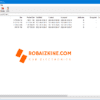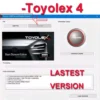What is AdBlue: The Comprehensive Guide to Diesel Exhaust Fluid 1
As a car owner or enthusiast, you may have come across the term “AdBlue” in discussions about diesel engines and emissions. But what exactly is AdBlue? In this comprehensive guide, we will delve into the world of AdBlue, also known as diesel exhaust fluid (DEF), and explore its purpose, composition, usage, and significance in reducing harmful emissions from modern diesel engines.
Understanding AdBlue
What is AdBlue?
AdBlue is a liquid solution that plays a vital role in reducing the emissions produced by diesel engines. It is a mixture of 32.5% urea and 67.5% deionized water. While AdBlue is commonly referred to as a brand name, it is technically known as diesel exhaust fluid (DEF). The term “AdBlue” is trademarked by the German Association of the Automotive Industry, and it is widely used to refer to DEF in the automotive industry.
The Purpose of AdBlue
The main purpose of AdBlue is to break down harmful nitrogen oxide (NOx) emissions produced by diesel engines. When diesel fuel is burned in the engine, it releases nitrogen oxide compounds, which contribute to air pollution and can have negative effects on human health and the environment. AdBlue,when injected into the exhaust system, undergoes a process called selective catalytic reduction (SCR), where it reacts with the nitrogen oxides and converts them into harmless nitrogen and water vapor.

AdBlue and Emissions Standards
The widespread usage of AdBlue in modern diesel vehicles is closely linked to the implementation of stricter emissions standards, particularly the Euro 6 standards. These standards, which have been in effect since 2016, set limits on the amount of harmful emissions, including nitrogen oxides, that can be released by vehicles. AdBlue has become an essential component in helping diesel engines meet these stringent emissions regulations.
How AdBlue Works
The Selective Catalytic Reduction (SCR) Process
AdBlue is injected into the exhaust system of diesel vehicles equipped with a selective catalytic reduction (SCR) system. The SCR system consists of a catalyst and a dosing unit that injects AdBlue into the exhaust stream. When the AdBlue comes into contact with the hot exhaust gases, it undergoes a chemical reaction, breaking down the nitrogen oxides into harmless nitrogen and water vapor. This process significantly reduces the emissions of nitrogen oxide compounds, helping diesel engines meet emissions standards.
AdBlue Consumption and Refilling
The consumption of AdBlue varies depending on factors such as vehicle type, engine size, and driving conditions. On average, a diesel vehicle equipped with an AdBlue system consumes approximately one liter of AdBlue for every 900-1000 kilometers driven. Most vehicles are fitted with a dedicated AdBlue tank, which typically holds around 10 liters of fluid. It is recommended to refill the AdBlue tank before it runs out to ensure uninterrupted operation and compliance with emissions standards. Warning lights or indicators on the vehicle’s dashboard will alert the driver when the AdBlue level is low.
Safety and Handling of AdBlue
Safety Precautions
While AdBlue is generally considered safe to handle, it is important to take certain precautions when dealing with the fluid. AdBlue is non-toxic, but it can cause irritation if it comes into contact with the skin or eyes. It is recommended to wear protective gloves and goggles when handling AdBlue. If accidental spills occur, the affected area should be rinsed with water. AdBlue should not be ingested or used for purposes other than its intended use in diesel engines.
Storage and Shelf Life
AdBlue should be stored in a cool and dry place, away from direct sunlight. Exposure to extreme temperatures should be avoided, as it can affect the quality and shelf life of the fluid. When stored correctly, AdBlue has a shelf life of approximately 12 months. It is important to check the expiration date on the packaging and use AdBlue within the specified timeframe to ensure optimal performance.
AdBlue and Vehicle Compatibility
AdBlue-Compatible Vehicles
AdBlue is primarily used in diesel vehicles equipped with a selective catalytic reduction (SCR) system. Many car manufacturers, including Renault, Citroen, BMW, Audi, Volkswagen, Ford, Mazda, and Toyota, have incorporated AdBlue systems in their late-model diesel cars and SUVs. These vehicles are designed to meet the stringent emissions standards set by regulatory bodies, such as the Euro 6 standards.
Checking Vehicle Compatibility
If you are unsure whether your vehicle is compatible with AdBlue, you can consult the owner’s manual or contact the manufacturer. The presence of an SCR system is a key indicator of AdBlue compatibility. Additionally, some vehicles may have a dedicated AdBlue filler cap or a dashboard indicator to monitor the AdBlue level. It is important to follow the manufacturer’s guidelines and recommendations regarding AdBlue usage and refilling.
AdBlue and Environmental Impact
Reducing Emissions and Air Pollution
AdBlue plays a significant role in reducing harmful emissions from diesel engines, particularly nitrogen oxide (NOx) compounds. By converting nitrogen oxides into harmless nitrogen and water vapor, AdBlue helps minimize the environmental impact of diesel vehicles. The reduction in emissions contributes to improved air quality and helps combat air pollution, benefiting both human health and the environment.
Compliance with Emissions Regulations
The use of AdBlue enables diesel vehicles to comply with stringent emissions regulations, such as the Euro 6 standards. These regulations aim to limit the amount of harmful pollutants released into the atmosphere. AdBlue-equipped vehicles undergo regular emissions testing to ensure compliance with these standards. Failure to use AdBlue or maintain adequate levels can result in non-compliance and potential penalties.
Availability and Purchasing AdBlue
Where to Buy AdBlue
AdBlue is widely available for purchase at various locations, including service stations, automotive parts stores, and some car dealerships. Major retailers and online platforms also offer AdBlue for sale. It is essential to ensure that the AdBlue purchased meets the required specifications, indicated by the ISO 22241 number on the packaging. AdBlue should be sourced from reputable suppliers to ensure quality and compatibility with your vehicle.
Refilling AdBlue
Refilling the AdBlue tank can be done by the vehicle owner or through professional service providers. Many vehicles have a dedicated filler cap for AdBlue, usually located near the fuel filler cap. Care should be taken to avoid spills and contamination during the refilling process. If spills occur, the affected area should be cleaned promptly with water. It is recommended to follow the manufacturer’s instructions and guidelines for proper refilling procedures.
Maintaining AdBlue Levels
Monitoring AdBlue Levels
Most vehicles equipped with an AdBlue system have a dashboard indicator or warning light to monitor the AdBlue levels. When the AdBlue level becomes low, the indicator will alert the driver, indicating the need for a refill. It is important to respond promptly to these warnings and refill the AdBlue tank to avoid running out of AdBlue.
Regular Service and Inspections
AdBlue levels are typically checked and topped up during regular vehicle servicing. It is advisable to adhere to the manufacturer’s recommended service intervals and have the AdBlue system inspected by qualified technicians. Regular maintenance ensures proper functioning of the AdBlue system and helps maintain compliance with emissions standards.
Common Questions and Myths about AdBlue
Myth: AdBlue is a Fuel Additive
Contrary to common misconception, Adblue is not a fuel additive. It is a separate fluid used in the exhaust system to reduce emissions. Adblue should not be mixed with diesel fuel or added directly to the fuel tank.
Myth: AdBlue is Made from Urine
While urea, one of the components of AdBlue, is found in urine, the urea used in AdBlue is typically synthetic and not derived from urine. Adblue is a carefully formulated solution composed of high-purity urea and deionized water.
Myth: AdBlue Damages Engines
When used correctly and in accordance with manufacturer’s guidelines, AdBlue does not damage engines. In fact, it helps engines comply with emissions standards and reduces the environmental impact of diesel vehicles.
The Future of AdBlue
Advancements in Emissions Technology
As emissions regulations continue to evolve and become more stringent, advancements in emissions technology, including Adblue systems, are expected to play a crucial role. Manufacturers are investing in research and development to further improve the effectiveness of emissions control systems and reduce the environmental impact of diesel engines.
Alternative Fuel Technologies
While AdBlue is currently used in diesel engines to reduce emissions, the automotive industry is also exploring alternative fuel technologies, such as electric and hydrogen-powered vehicles. These technologies aim to provide even cleaner and more sustainable solutions for transportation, further reducing dependence on traditional fossil fuels.
Final Words
AdBlue, also known as diesel exhaust fluid (DEF), is an essential component in modern diesel vehicles equipped with selective catalytic reduction (SCR) systems. It plays a crucial role in reducing harmful emissions, particularly nitrogen oxide (NOx) compounds, produced by diesel engines. By understanding the purpose, usage, and environmental significance of Adblue, vehicle owners can make informed decisions and contribute to a cleaner and more sustainable future.
Remember to consult your vehicle’s owner’s manual and follow the manufacturer’s recommendations regarding AdBlue usage, refilling, and maintenance. AdBlue is an important tool in reducing emissions and ensuring compliance with emissions standards and disabling Adblue system negatively affects environment , it is helping us move towards a greener and more environmentally friendly automotive industry.






what is cost of AdBlue in EU countries? i think it is not cheap, one more expense for drivers 🙁